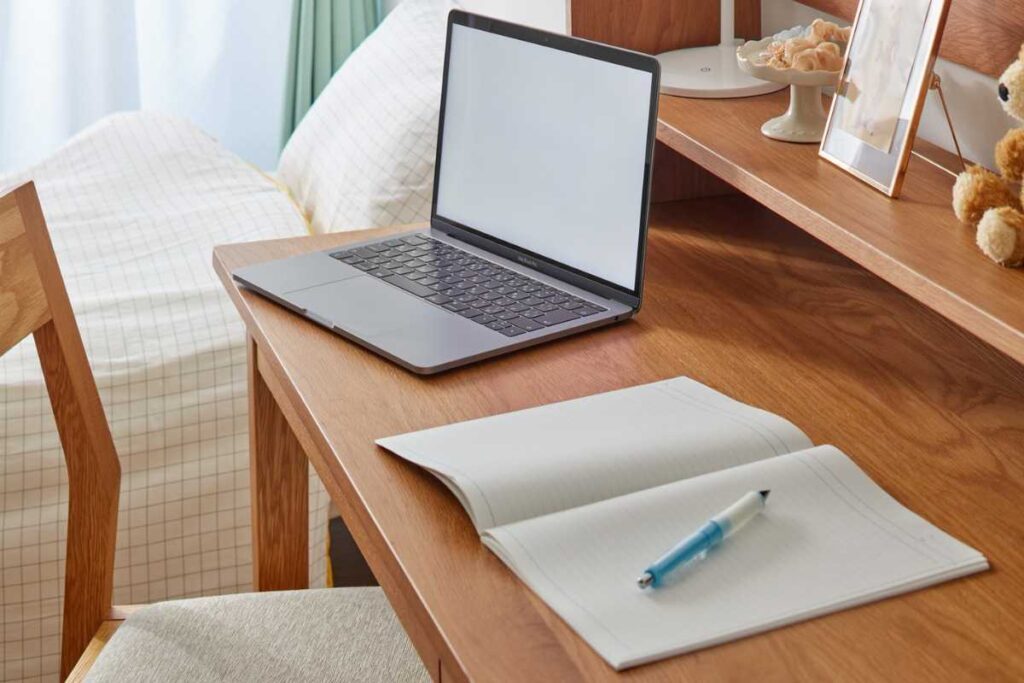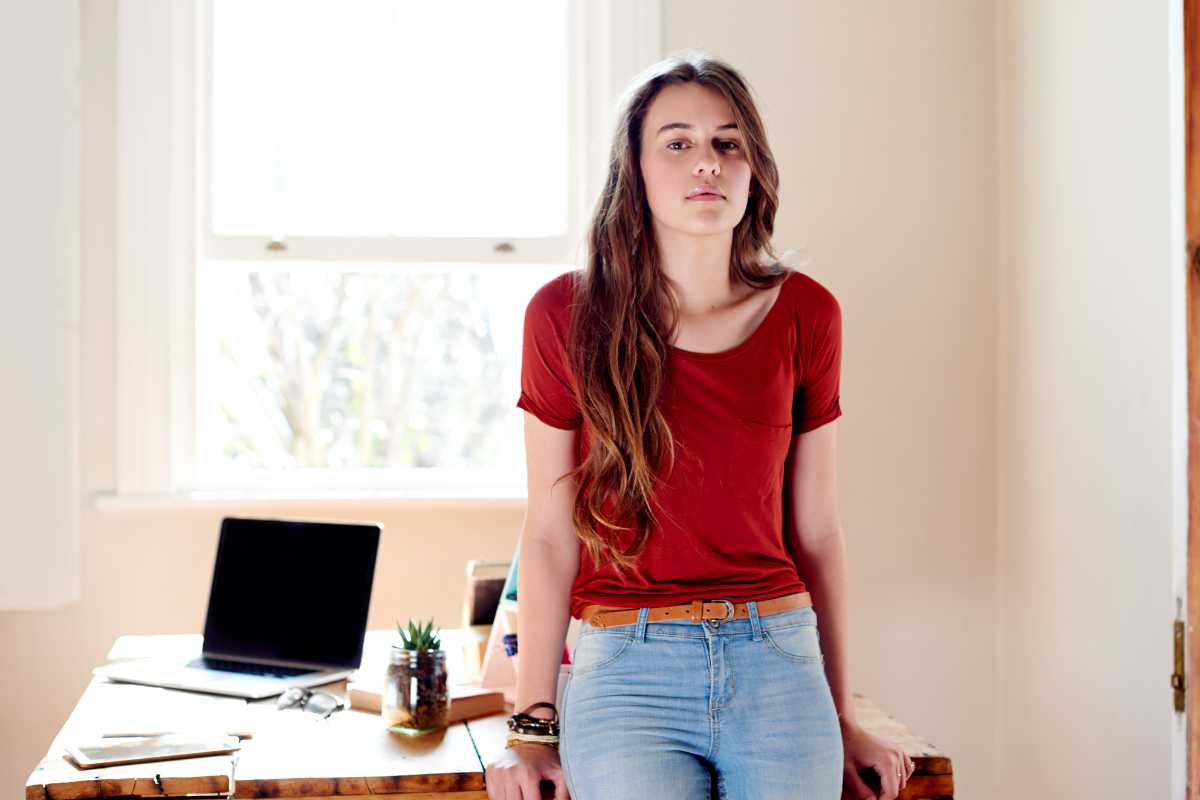Eco-Friendly Homework Station: Set Up a Low-Waste Study Space

A child’s desk is more than a surface for worksheets—it’s a place where habits form. Building a low-waste homework station teaches everyday sustainability alongside reading and math.
It trims clutter, saves money, and reduces the environmental footprint of schoolwork.
When kids see that smart design can cut waste without cutting comfort, they learn to value resources, think creatively, and take pride in caring for their stuff.
And for parents, a tidy, efficient nook can calm the after-school rush and make assignments feel less like a chore.
Start with the Space You Have

You don’t need a remodel or designer furniture. The greenest option is often what’s already in the house. A quiet corner—near a window if possible—can become a focused study spot.
Choose a place with minimal foot traffic so concentration isn’t constantly interrupted.
If you’re repurposing a table, check its height and pair it with a supportive chair; comfort drives attention, and attention reduces the time (and materials) wasted on re-doing work.
Add felt pads to chair feet, not just to protect floors but to quiet the micro-sounds that chip away at concentration. A calmer space means fewer distractions and fewer crumpled pages from frustration.
Furnishing with a Light Footprint
An eco-minded station favors durability over disposability. Solid wood desks and shelves from thrift shops or family attics often outlast budget pieces and can be easily refinished.
If you’re buying new, look for FSC-certified wood or furniture made from recycled content. Consider a desk with a modest footprint and a vertical storage plan—walls and the side of the desk can hold most supplies.
Modular crates, reclaimed boards with brackets, or a tall bookcase create tiers that keep work surfaces clear. The clearer the desktop, the less likely materials are to get lost and replaced—another quiet win for reducing waste.
Natural Light First, Efficient Light Second

Sunlight boosts mood and helps kids feel awake; place the desk so the dominant hand doesn’t cast a shadow (lamp on the left for right-handers, and vice versa). When daylight fades, choose an LED task lamp with a warm color temperature to reduce glare.
LEDs use less energy and last thousands of hours, slashing both electricity use and replacement frequency.
A lamp with a focused beam keeps the workspace bright without lighting the whole room, which is both energy-smart and better for evening wind-down.
Materials That Respect the Planet

The Essentials, Low-Waste Edition
Pencils over pens may sound quaint, but refillable and erasable tools cut trash and encourage revision without reprinting.
Mechanical pencils with sturdy bodies and bulk lead refills outlast packs of wood pencils, while refillable rollerballs beat disposable pens on both cost and waste.
Opt for recycled-content notebooks and, whenever possible, choose spiral bindings that can be separated from paper for easier recycling. For sticky notes and index cards, buy recycled versions or use offcuts from printed sheets.
Paper That Works Harder
Designate a “second life” tray for single-sided printouts and drafts. Kids can use the blank backs for math practice, sketching diagrams, or planning essays.
A simple stamp or corner mark helps everyone spot reuse paper at a glance.
When fresh sheets are necessary—final drafts, submissions—keep a stack of recycled, chlorine-free paper for a crisp, clean look without the environmental cost of virgin pulp.
Organization That Prevents Waste

 Green Living for Busy People: Simple Eco-Friendly Habits That Work
Green Living for Busy People: Simple Eco-Friendly Habits That WorkDisorganization breeds duplication: when you can’t find scissors or a ruler, you buy another. A compact system—one caddy, one drawer, one file—prevents scatter and saves resources.
A divided caddy (even an upcycled tin set in a small box) keeps pencils, erasers, sharpeners, scissors, and glue sticks visible and easy to grab.
For papers, use three standing folders: “Active,” “Waiting,” and “Archive.” Active holds current homework and reference sheets; Waiting holds items needing a signature or extra information; Archive keeps the term’s best materials.
At week’s end, kids choose what truly deserves to stay. Editing their own pile builds ownership and trims clutter.
Tech That Treads Lightly

Devices You Already Own
Before buying a new tablet or laptop, check whether a family device can be shared with a schedule. Many assignments only require a browser and word processor.
If a new device is necessary, consider refurbished models from reputable sellers; they extend the life of electronics and reduce e-waste.
Add a rigid case and a cable-management sleeve—keeping cords tidy and protected prevents frayed chargers and premature replacements.
Printing Smarter, Not More
Set default printer settings to duplex (double-sided) and draft quality for practice pages. Encourage digital submissions when schools allow it.
A small whiteboard or chalkboard above the desk replaces dozens of sticky notes; it’s perfect for weekly vocab, math formulas, or reading logs.
If teachers require paper planners, choose ones with recycled content and refillable pages—the cover can last across school years.
Habits That Make the Space Work

An eco-friendly station functions best when it’s easy to maintain. Build a simple rhythm: a two-minute reset at the end of homework. Pens return to the caddy, scrap goes to the second-life tray, finished pages get filed.
This isn’t a chore list; it’s a tiny ritual that tells the brain the workday is done. Encourage kids to decorate the space with sustainable flair—pressed leaves, a postcard from a museum, a tiny corkboard collage.
Ownership makes care feel natural, which keeps the system intact without nagging.
Air, Sound, and Feel
Sustainability includes the body. Good posture reduces the fidgeting that leads to broken supplies and messy desk accidents. A rolled towel at the lower back and feet flat on a small box can transform a chair into a healthier seat.
A desk plant like pothos or snake plant is hardy and signals a living connection to the environment; kids notice when it needs water and learn responsiveness. For sound, soft textiles (a small rug, felt pinboard) quiet the space.
Less noise often equals better focus and shorter homework sessions, which cuts lighting time and device use—small efficiencies that add up.
Waste-Wise Art and Projects

Homework often brings craft moments: dioramas, posters, models. Create a project bin with rescued cardboard, cereal boxes, twine, jar lids, and fabric scraps.
These offcuts become raw materials for creativity. Pair them with non-toxic, washable glue and paints.
When a project wraps, sort what can be returned to the bin and what can be recycled or composted. Kids learn that materials have cycles, not just landfills.
Snacks, Hydration, and Energy
A reusable bottle on the desk reduces trips to the kitchen and the temptation of single-use drinks. Teach kids to fill it before starting; hydration aids concentration and reduces snack rummaging.
For study snacks, keep a lidded jar for nuts or dried fruit and a cloth napkin in the drawer. These small choices normalize repeatable containers and ditch disposable wrappers.
On the energy side, a smart plug on the lamp and charger can cut phantom draw; one tap powers everything down, setting a healthy boundary between study time and the rest of the day.
Related reading: Green Living for Busy People: Simple Eco-Friendly Habits That Work
Green Living for Busy People: Simple Eco-Friendly Habits That Work Sustainable Home Décor Ideas for an Eco-Friendly Lifestyle
Sustainable Home Décor Ideas for an Eco-Friendly LifestylePaperless Workflows That Actually Stick

Going digital only works if it’s friction-free. Create a shared folder with subfolders by subject, and agree on clear file names—“Subject_Unit_Assignment_Date” makes old work easy to find.
Encourage using built-in markup tools for PDF worksheets instead of printing. A free note app that syncs across devices can host reading logs, quick research notes, and checkpoints.
When submissions must be printed, kids can still draft digitally, correcting spacing or grammar before a single page is used.
Budget-Friendly Sustainability
Eco upgrades don’t need premium price tags. A secondhand desk plus a fresh coat of low-VOC paint can feel brand-new. Glass jars and tins substitute for plastic cups.
A cardboard shipping box becomes a magazine file with two diagonal cuts. Ask relatives for school-supply leftovers—there’s always a half-used notebook happy to live again as scratch paper.
If you do buy something new, choose items with repairable parts and refill systems so the station evolves without constant replacements.
Teaching Autonomy Through Design

When the station is intuitive, kids can manage it themselves. Labels help—light-touch tags like “Write,” “Cut & Stick,” “Measure,” “Color” are easy to read at a glance.
A visible checklist for weekly resets (without strict step-by-steps) fosters responsibility: recycle finished drafts, replenish the second-life tray, water the plant, tidy the caddy.
The goal isn’t perfection; it’s a rhythm that keeps the space ready for tomorrow without a parental rescue mission.
Making It Inspiring, Not Just Efficient
Efficiency matters, but joy fuels consistency. Hang a small clip frame for rotating wins: a strong paragraph, a solved problem, an art splash that surprised them.
Celebrate the process—not just grades—by saving a single page each month that shows effort, revision, or creativity.
That monthly page can become a year-end mini-portfolio, a tangible reminder that resourcefulness and growth go hand in hand.
What to Do with the Leftovers

Every home collects near-empty glue sticks, broken crayons, and stubby pencils. Create a “last stop” box where worn items live until they’re truly done.
Melted-down crayon bits become new chunky crayons in silicone molds; pencil nubs can be taped to a pencil extender and used to the end.
This playful approach reframes waste as raw material and invites kids to solve problems with what’s on hand.
A Study Space That Teaches by Example

A low-waste homework station isn’t about perfection—it’s about thoughtful choices repeated often. Choose durable basics, organize for visibility, default to reuse, and let digital tools lighten the paper load.
Make maintenance quick and empowering so kids can own the system. Add light, air, a dash of personality, and a few rituals, and the space becomes more than a desk; it becomes a lesson in stewardship, focus, and pride.
When children experience that sustainability supports their success—cleaner surfaces, easier finds, calmer evenings—they carry that insight beyond homework.
The habit of using only what’s needed, caring for what you have, and finishing what you start will follow them into classrooms, hobbies, and the wider world—proof that a greener study nook can quietly shape a greener life.
Did you find this post useful or inspiring? Save THIS PIN to your ECO Board on Pinterest! 😊

 Green Living for Busy People: Simple Eco-Friendly Habits That Work
Green Living for Busy People: Simple Eco-Friendly Habits That Work Sustainable Home Décor Ideas for an Eco-Friendly Lifestyle
Sustainable Home Décor Ideas for an Eco-Friendly Lifestyle What Methods Can Be Used to Create Recycled Fashion?
What Methods Can Be Used to Create Recycled Fashion?

You may also like